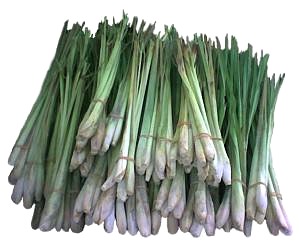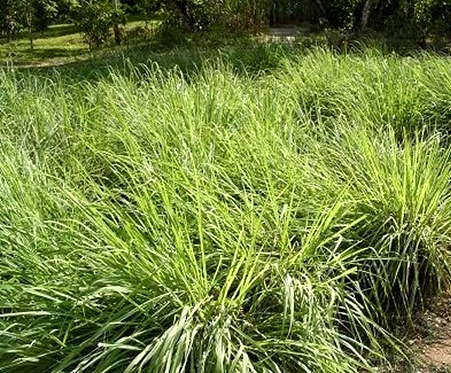 Lemon grass (Cymbopogon citratus) or popularly known as “Tanglad” in the Philippines, is a commercially-viable plant that is cultivated mainly for the fragrance that it produces. Lemongrass is native to the Philippines and it is widely used as a herb in Asian cuisine. It has a citrus flavor and can be dried and powdered, or used fresh. By nature, tanglad is a permanent or perennial plant, and the benefits of which are not restricted to its fragrance. The utility of tanglad basically lies in its leaves, where all the benefits are derived. What can be seen of this plant are mainly its leaves, which allows easy access to the main part that is needed in order to enjoy tanglad’s health benefits. It constitutes most of what appears of this plant above ground, as the leaves grow up to one meter in length, and are flat in shape.
Lemon grass (Cymbopogon citratus) or popularly known as “Tanglad” in the Philippines, is a commercially-viable plant that is cultivated mainly for the fragrance that it produces. Lemongrass is native to the Philippines and it is widely used as a herb in Asian cuisine. It has a citrus flavor and can be dried and powdered, or used fresh. By nature, tanglad is a permanent or perennial plant, and the benefits of which are not restricted to its fragrance. The utility of tanglad basically lies in its leaves, where all the benefits are derived. What can be seen of this plant are mainly its leaves, which allows easy access to the main part that is needed in order to enjoy tanglad’s health benefits. It constitutes most of what appears of this plant above ground, as the leaves grow up to one meter in length, and are flat in shape.
Lemongrass is commonly used in teas, soups, and curries. It is also suitable for poultry, fish, beef, and seafood. It is often used as a tea in African countries such as Togo and the Democratic Republic of the Congo and Latin American countries such as Mexico. Lemongrass oil is used as a pesticide and a preservative. Research shows that lemongrass oil has anti-fungal properties.
Health Benefits of Lemon Grass:
- It contains an antibacterial and anti-fungal properties
- It helps to detoxify the liver, pancreas, kidney, bladder and the digestive tract.
- Helps boost the immune system
- Helps reduce uric acid, cholesterol, excess fats
- It helps alleviates indigestion and gastroenteritis.
- Helps improve the skin by reducing acne and pimples
- It helps tone the muscle and tissues.
- Helps in menstrual troubles
- Helps reduce blood pressure and improve blood circulation
- Helps reduce cellulite
- Act as sedative for the central nervous system.
- May help prevent color cancer.
- Helps in reducing fevers
- Help in flatulence and colic
- Relieves arthritic pain and rheumatism
How to grow Lemon Grass or Tanglad
AGROCLIMATIC REQUIREMENTS
Lemongrass requires a warm and humid climate with plenty of sunlight and rainfall, ranging from 250 cm to 300 cm, uniformly distributed over the year. The plant is hardy and resistant to drought.
High temperature and sunshine are conducive to the development of oil in the plant. It grows luxuriantly in hilly places receiving heavy rainfall and is harvested more frequently; its oil and citral contents are less compared to the plants growing in regions receiving less rainfall.
Lemongrass grows well at altitudes between 100 and 1,200 m above sea level, generally on poor soils with hilly slopes but flourishes on a wide variety of soils ranging from rich loam to poor laterite. It grows best on well-drained sandy loam soil; it even thrives on light sandy soils, provided they are well manured. Plants from such a sandy soil yield relatively more oil with higher citral content.
CULTURAL MANAGEMENT PRACTICES
Propagation
Lemongrass is propagated both from seeds and rooted slips in case of C. flexuosus. Whereas, C. citratus is grown through rooted slips. However, it is better to propagate the plant by vegetative methods from selected clones, as seed propagation leads to considerable genetic heterogeneity resulting in deterioration of yield and oil quality.
Collection of seeds. The crop flowers during November and December and seeds are collected from January to February. To collect seeds, the plants are left without harvest because yield of seeds from plants subjected to regular harvest is less.
On the average, a healthy plant gives about 100-200 grams of seeds. The whole inflorescence is cut and sundried for two to three days. They are then trashed and seeds are again sundried. They are then stored in gunny bags. The seeds lose their viability if stored over a longer period.
Preparation of nursery. The plant is cultivated preferably as a transplanted crop because it has been found superior to direct sowing of seeds in terms of grass yield, oil content, and citral percentage.
The seeds are sown by hand in a well prepared nursery at the onset of the monsoon from April to May and are covered with a thin layer of soil. The nursery is watered in the absence of rainfall. About 10 kilograms of seeds are adequate to raise seedlings for planting I hectare (ha). Seeds germinate in five to six days. Seedlings are ready for transplanting when about 60 days old.
Transplanting. Seedlings are planted at a distance of 45 to 60 cm in rows 60 to 70 cm apart. It is better to plant on ridges in areas receiving high rate of rainfall.
Propagation by root divisions. Tops of clumps are cut off within 15 cm of the root. It is divided into segments and the lower brown sheath is removed to expose young roots. One or two segments are placed into each hole, about 15 cm deep. Each segment is transplanted firmly into the ground. This is done at the beginning of the rainy season.
The spacing of the segments depends upon the fertility of the soil and climatic conditions of the place of cultivation. Placing the segments 60 cm apart in rows about 90 cm apart is reasonable. Closely spaced plants give more grass than the wide-spaced ones; but the increase in oil is not as much as the increase in grass yield.
Fertilization
Lemongrass is a soil-exhausting crop. It is preferable to use spent lemongrass in the form of compost at the rate of 10 tons/ha and wood ash at the rate of 2 tons/ha. It supplies sufficient amount of nitrogen and potash which are the most important growth factors in the crop.
The use of inorganic fertilizers also gives encouraging results. It is recommended to supply 30 kg P2O5, 30 kg K2O, and 30- kg nitrogen per hectare as basal dose at the time of planting. Nitrogen (60 kg) can be top dressed in three to four split-doses during the growing season.
Weeding
Weeding and hoeing are very important as they affect the yield and soil quality. Generally, two to three weedings are necessary in a year. Earthing up should also be done at least once a year.
In a row-planted crop, intercropping can be done by a tractor-drawn cultivator or hand-hoc. Weeds can also be controlled by applying recommended herbicides. Distillation waste, when applied at 3 to 5 tons/ha suppresses weed growth.
Irrigation
In areas receiving good amount of rainfall, irrigation is not necessary. However, lemongrass has high water requirement and irrigation is essential to obtain optimum yield in those areas where rainfall is not evenly distributed.

POSTHARVEST PRACTICES
Harvesting
First harvest is generally possible after three months of transplanting in the case of C. flexuosus and after six months of planting of C. citratus. Subsequent harvests take place at intervals of 40-50 days. Under normal conditions, more harvests are possible during the first year than in subsequent years.
Drying
The grass is either distilled fresh or allowed to wilt for 24 hours. Wilting reduces the moisture content and allows larger quantity of grass to be packed into the still, thus economizing the fuel use.
Pest Management
Several pests and diseases have been found to affect lemongrass. The most important one is the Chilotreae species. The caterpillar is color white and has a black head and black spots on its body. It attacks lemongrass by boring into the stem and feeding on the shoot. The first symptom of the attack is the drying up of the central leaf. Subsequently, the whole shoot dies, resulting in a significant reduction in grass yield.
Control measures include setting the dry stubbles on fire during the off-season in summer to destroy caterpillars lurking inside the stubbles, pulling out and destroying the affected shoots, and spraying appropriate chemicals in case of severe infestation.
Distillation
To have good quality oil, it is advisable to use steam-distillation. To obtain the maximum oil yield and facilitate oil release, the grass is chopped into shorter lengths. Chopping the grass is advantageous because more grass can be charged into the still and even packing is facilitated.
The grass should be packed firmly to prevent the formation of steam channels. The steam is allowed to pass into the still with a steam pressure from 18 to 32 kg in the boiler.
Storage
The oil is stored in containers, preferably glass or well-tinned iron. Containers should completely be filled to exclude any air and protect from sunlight as they affect the citral content. Filtering the oil too often in open air affects the citral content. The oil should be free from moisture.
Uses
The oil is used to isolate citral for the manufacture of vitamin A. Citral is the starting material for the manufacture of ionones and is also used in flavors, cosmetics and perfumes. A small amount of oil is used, as such, in soaps detergents and other preparations.
In some countries, the grass is used as a food flavoring, especially on chicken. It is also often used for flavoring tea and added to bath water.
The spent lemongrass leaves are suitable for making paper and are used as fuel for the distillation of the lemongrass. It is also an excellent Source of manure; it is applied either after composting or in the form of ash by burning.
Sources: wikipedia.org, ezineArticles.com; Photos: philippineherbalmedicine.org, agribusinessweek.com
Name of the author